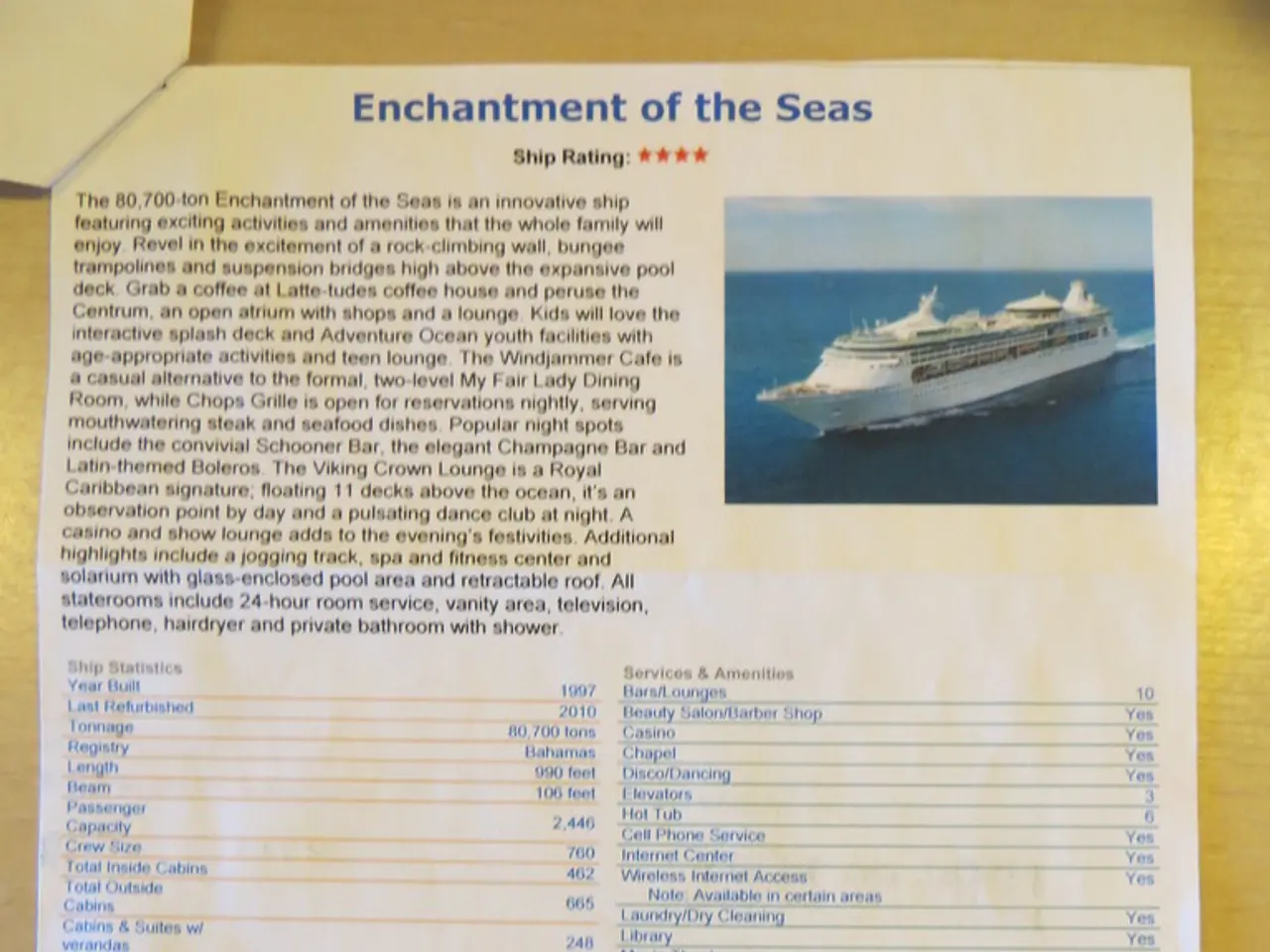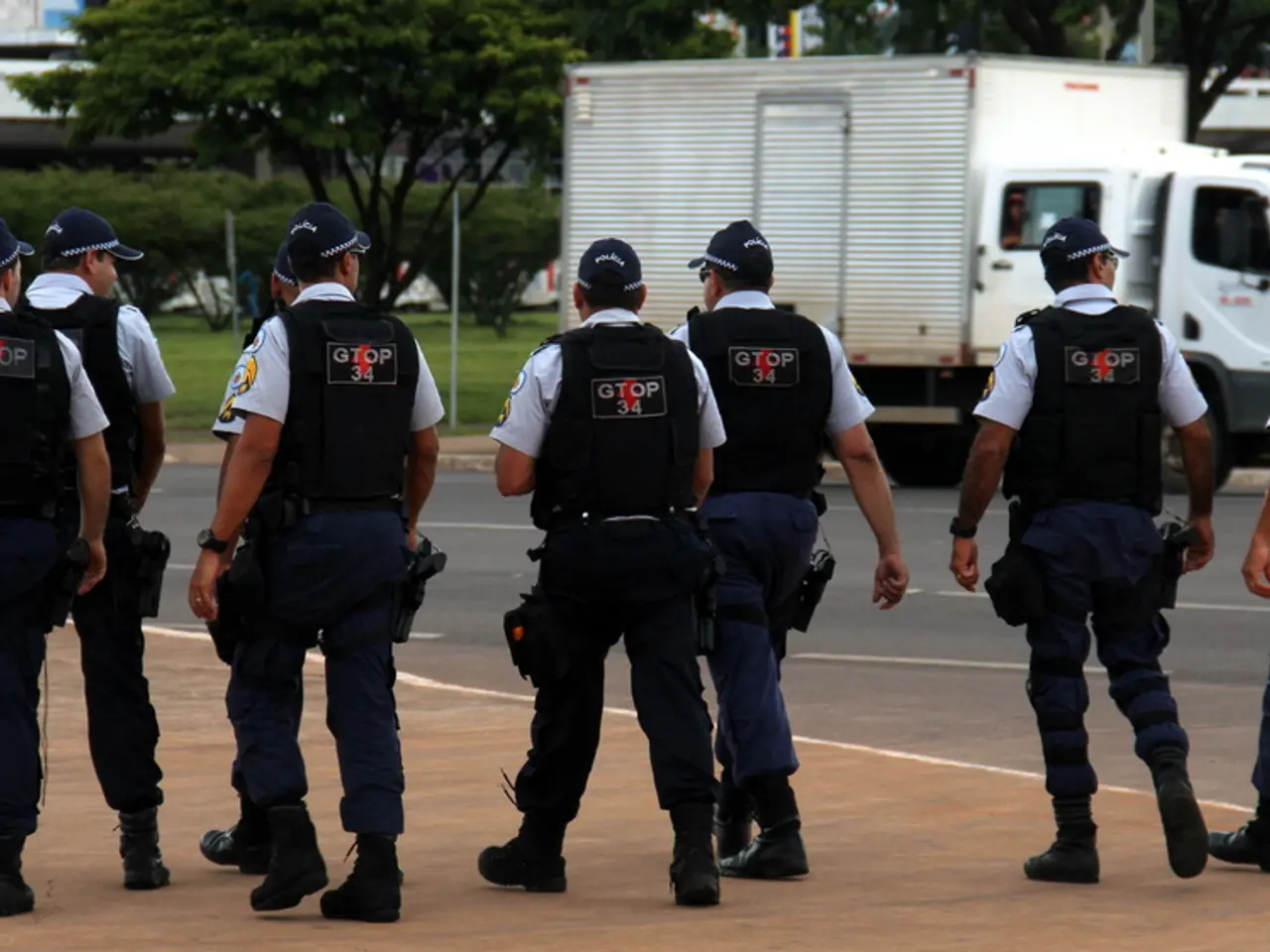Unified Management of Encrypted Data in the Baltic Sea
The harmonization of Electronic Navigational Charts (ENC) in the Baltic Sea is a collaborative initiative among Baltic Sea states, aimed at standardizing chart data presentation to enhance navigational safety and efficiency. A significant aspect of this effort is the FIN-SWE Pilot project, which focuses on harmonizing the presentation of depths between Finland and Sweden.
Launched in 2012, the FIN-SWE Pilot project seeks to reconcile differences in depth data depiction, such as contour intervals and value assignments, between Finnish and Swedish hydrographic offices. This initiative aims to provide mariners with a seamless and consistent hydrographic dataset within the Baltic Sea, reducing risks from misunderstandings and inconsistencies when transiting between adjacent national waters.
The project's inception came about due to the establishment of the Baltic Sea Hydrographic Commission's (BSHC) ENC Harmonisation Working Group (BSEHWG) in 2007. This working group was tasked with reviewing inconsistencies between Baltic Sea ENCs and proposing actions to resolve them.
The BSEHWG prioritized addressing harmonization issues from a mariner's point of view, identifying various inconsistencies, including mismatches in Navigational Purposes, density of soundings, SCAMIN settings on soundings and on depth contours, representation of depressions, mismatches of depth contours, generalization of depth contours, non-equivalent depth contours, and rounding of soundings.
As of mid-2025, Baltic Sea ENC harmonization, including the FIN-SWE Pilot, remains a priority development axis under Baltic Sea hydrographic cooperation frameworks such as HELCOM and regional hydrographic commissions. These efforts are in various stages of implementation and testing, driven by the need to comply with increasingly stringent e-navigation and International Maritime Organization (IMO) standards for ENC quality and interoperability.
Detailed and recent public documents outlining the current milestone status of the FIN-SWE Pilot may not be fully available. However, it is clear from broader regional reporting and typical ongoing international hydrographic practices that:
- Baltic countries continue to collaborate closely on ENC standardization and harmonization to improve maritime safety and digital navigation consistency.
- The FIN-SWE Pilot serves as a practical testing ground and model for harmonization of depth contours and data presentation, likely leveraging new hydrographic survey data, shared methodologies, and harmonized depth value tables.
- These efforts support the implementation of the European Union's e-navigation policies and the IMO's requirements for ENC harmonization to facilitate safer and more efficient navigation within the Baltic Sea Area.
In summary, the Baltic Sea ENC harmonization, including the FIN-SWE Pilot for harmonizing depth presentation, is actively progressing as part of a regional initiative to create uniform and interoperable navigational chart data. These efforts are not just technical standardization but critical enablers of safer and more effective maritime operations in a heavily trafficked and environmentally sensitive sea area.
Further specific progress details would require directly consulting Baltic hydrographic offices or bodies like the Baltic Sea Hydrographic Commission’s latest reports, which may exceed the scope of current public search results.
Additionally, the BSHC's members agreed to implement the recommendations made by the working group and monitor the implementation at their annual Conferences. The International Hydrographic Organization's (IHO) WEND and CHRIS committees have also encouraged other Regional Hydrographic Commissions to consider similar cooperation and harmonization actions for adopting regional implementations of IHO recommendations.
A joint chart updating process is being developed within the pilot project, with testing planned to start in August 2014, using the Åland Sea as the test area. The BSHC also discovered that there are many misunderstandings among professional mariners regarding terms like 'ECDIS', 'ECS', 'ENC', and 'Electronic chart', and all relevant bodies were encouraged to promote the education of mariners regarding these issues.
Lastly, the BSHC approved the working group's report and recommendations in August 2008, and an implementation schedule was agreed upon. The IHO ENC Production Guidelines were amended to allow and promote this kind of regional approach, as stated in the IHO guidelines from 2008.
- The FIN-SWE Pilot project, launched in 2012, is a practical testing ground for harmonizing depth contours and data presentation, which could potentially utilize new hydrographic survey data, shared methodologies, and harmonized depth value tables, contributing to medical-conditions and lifestyle navigation safety in the Baltic Sea.
- The harmonization of Electronic Navigational Charts (ENC) in the Baltic Sea, including the FIN-SWE Pilot, serves as an example for technology advancements in maritime navigation, as it aims to comply with increasingly stringent e-navigation and International Maritime Organization (IMO) standards for ENC quality and interoperability.
- Educational and self-development resources are being encouraged by the BSHC to clear misunderstandings among professional mariners regarding terms like 'ECDIS', 'ECS', 'ENC', and 'Electronic chart', which are crucial for understanding the science of marine spatial data and implementing general-news policies such as the European Union’s e-navigation policies and the IMO’s requirements for ENC harmonization.
- The Baltic Sea countries' collaboration on ENC standardization and harmonization extends beyond the domain of space-and-astronomy, as it supports the implementation of education-and-self-development initiatives, fostering safer and more effective maritime operations in the Baltic Sea Area while conforming to the requirements of the International Hydrographic Organization (IHO) and regional hydrographic commissions.




